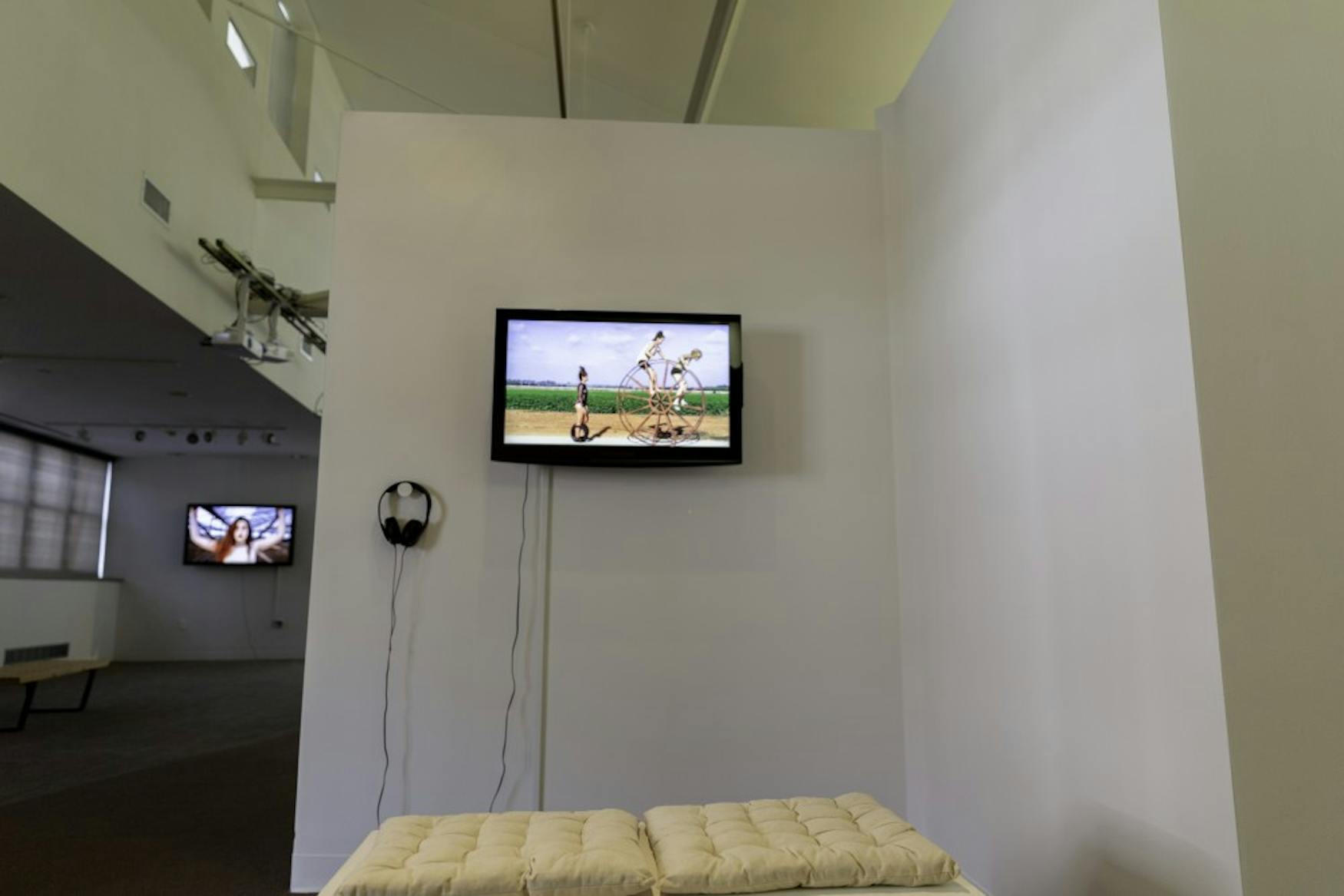‘One Foot Planted’ pushes boundaries
“One Foot Planted,” a new installation by artists Ayelet Carmi and Meirav Heiman, explores the relationship between women, the land of Israel and the gender politics that bind the two. The work, which consists of a series of videos, envisions a post-apocalyptic version of the Holy Land, in which its female inhabitants are forced to traverse the terrain on various obstacles that keep their bodies from making contact with the earth. Some of these women walk on stilts, while others walk with orbs beneath their feet. One woman even walks on her hands — which are on stilts. The journey is painstaking. For a rough visual reference, think of it as a slowed down version of “Mad Max: Fury Road.”
Carmi and Heiman’s vision is beautifully realized. The piece, which required fifty on-screen performers — of all ages and abilities — also features extensive costuming and prop work; each actor is either carrying or pushing some kind of burden. They do this in three environments: a beach, a forest and a desert, all of which are beautifully captured on camera. The presentation of the footage with three parallel projections that create an ultra-wide, panoramic view conveys the vastness of the journey on screen. The quest of the women in Carmi and Heiman’s world is endless. As the characters of “One Foot Planted” try to make contact with Israel, they are always halted by some obstacle, which distances them from ever making contact with the ground. It is a striking visual metaphor. In a country like Israel, where so much of the national identity is about literally working the land, its women in this piece of art are able to only approach the fulfillment of that national self-determination. The message this piece sends is all the more effective when one considers its apocalyptic setting; the videos are saying that an Israel that does not let its women fully interact with the politics of the land is essentially a world at its end.
Aside from the main feature of the installation, there is a secondary screen that displays videos of women spinning on a wheel. With the camera in a stationary position looking at the wheel, the video creates the illusion of the world spinning around the trapped women, who are counting endlessly. It is another creative representation of a woman trapped, as the world spins around her. And she does not count down, as if to an end that is in sight, but up. This highlights the endless, spinning cycle that Israeli women face as they try to be fully recognized in their homeland.
Overall, “One Foot Planted” is a nuanced exploration of Israeli women and their relationship to Israel. Carmi and Heiman succeed in conveying the bleakness they see in the situation, while simultaneously imbuing it with enough beauty to imply that there is indeed hope on the horizon behind the rough terrain that women face. While on the surface it seems hopeless, “One Foot Planted” is ultimately hopeful.
“One Foot Planted” is currently in exhibition at the Kniznick Gallery at the Hadassah-Brandeis Institute. It will remain on display until June 28.



Please note All comments are eligible for publication in The Justice.